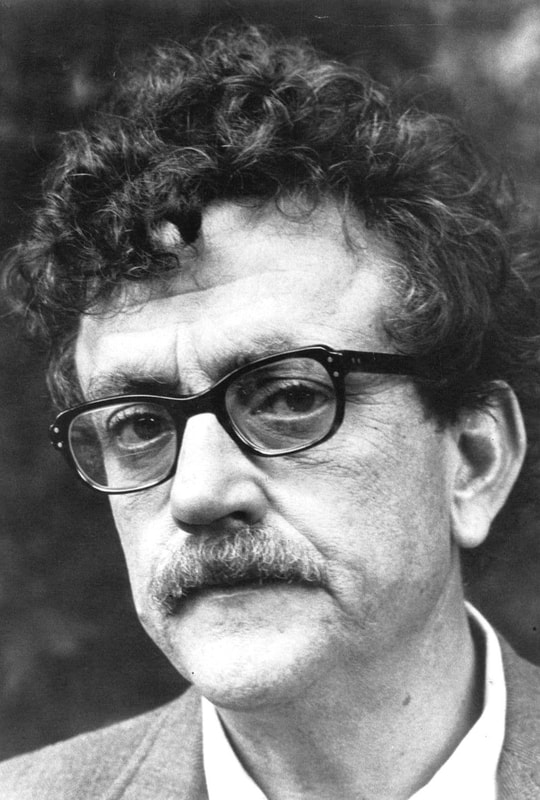Cultural Context
Your browser does not support viewing this document. Click here to download the document.
Your browser does not support viewing this document. Click here to download the document.
Chapter 1
What do you think of the tone of Vonnegut’s letter to his family? Is it different than you imagined a letter like that would be? Why or why not?
Why do you think it took Vonnegut so long to write his “famous Dresden book”? How does the author's trauma and survivor's guilt affect his relationship with this "lousy little book" (2)?
Why do you think Vonnegut tells the story about working for the Chicago City News Bureau?
Why do you think the details of the bombing of Dresden were still secret when Vonnegut inquired?
The author unceremoniously observes: "the yellow line stopped because the character represented by the yellow line was dead. And so on. The destruction of Dresden was represented by a vertical band of orange cross-hatching, and all the lines that were still alive passed through it, came out the other side" (7). What is the author's tone and attitude toward the events of 1945?
For what specific purpose does the author employ the biblical analogy of Lot's wife? And why does he call himself the pillar of salt?
Why was O'Hare's wife Mary so antagonistic to the author the first time they met?
In what ways and to what extent was World War II another Children's Crusade?
Chapter 2
In what context does the author iterate "so it goes"? And how does this phraseology establish the author' tone and attitude?
What do you think Mary O'Hare might say to Roland Weary--who is still a child but a bully boy who grandstands in his heroic fantasy?
Note: Roland Weary shares his first name with the protagonist of The Song of Roland, the oldest French heroic epic about a crusader. Nephew of Charlemagne, Roland leads the French forces against the Spanish Muslims and dies from the wounds he sustained when he burst his temples by blowing his olifant-horn too hard.
A female colleague of the author munches on a bar of Three Musketeers Candy Bar in Chapter 1, and Weary fancies himself as a Musketeer. Why do you think the author repeats this allusion to the Three Musketeers? In what ways is this reference related to the glorification of crusaders and Arthurian knights?
Chapter 3
|
Chapter 4
Chapter 5
Chapter 6
Chapter 7
Chapter 8
Chapter 9
Chapter 10
"Facing It" (1986, Yusef Komunyakaa)
|
"Death Fugue" (1945?, Paul Celan)
|






